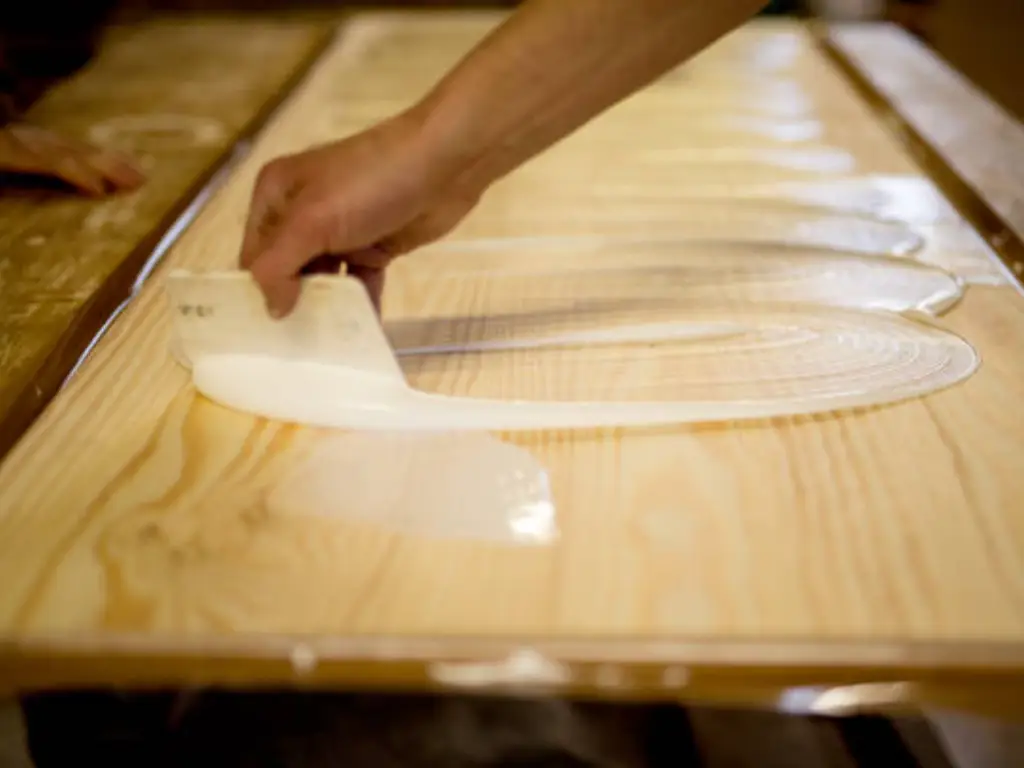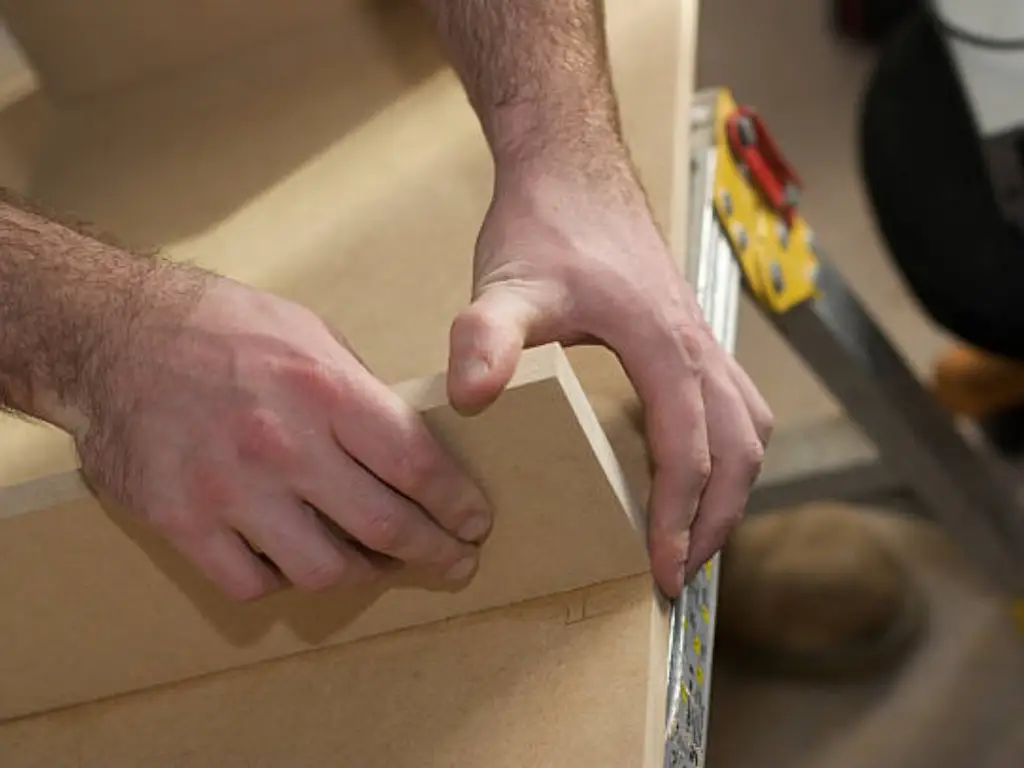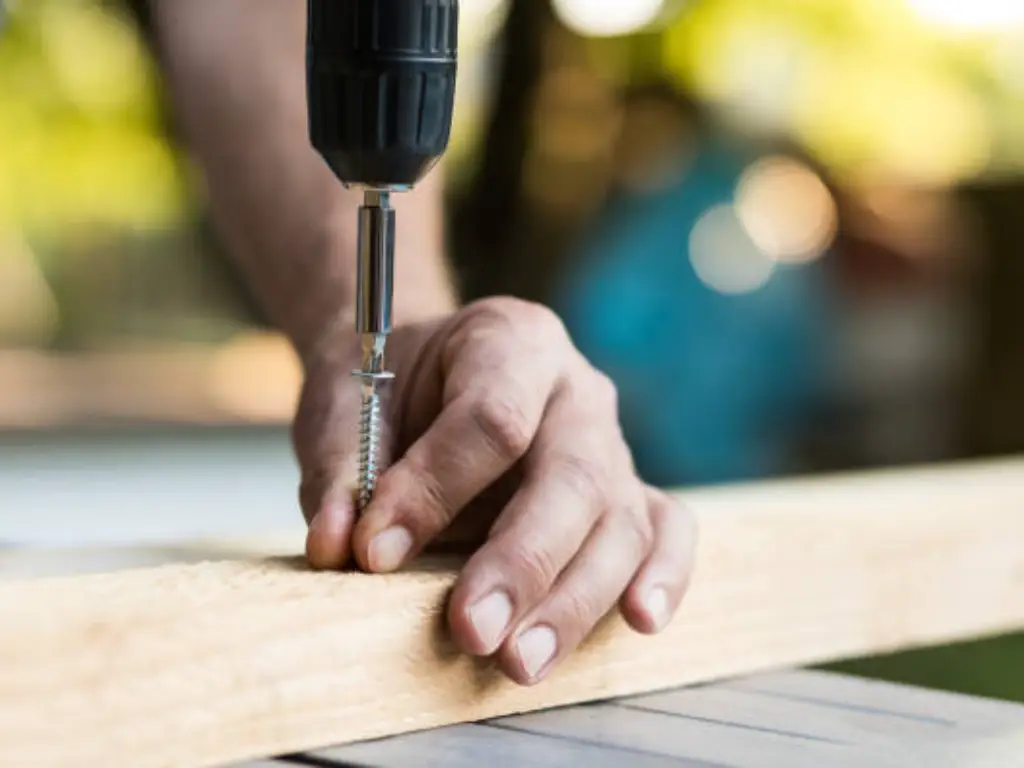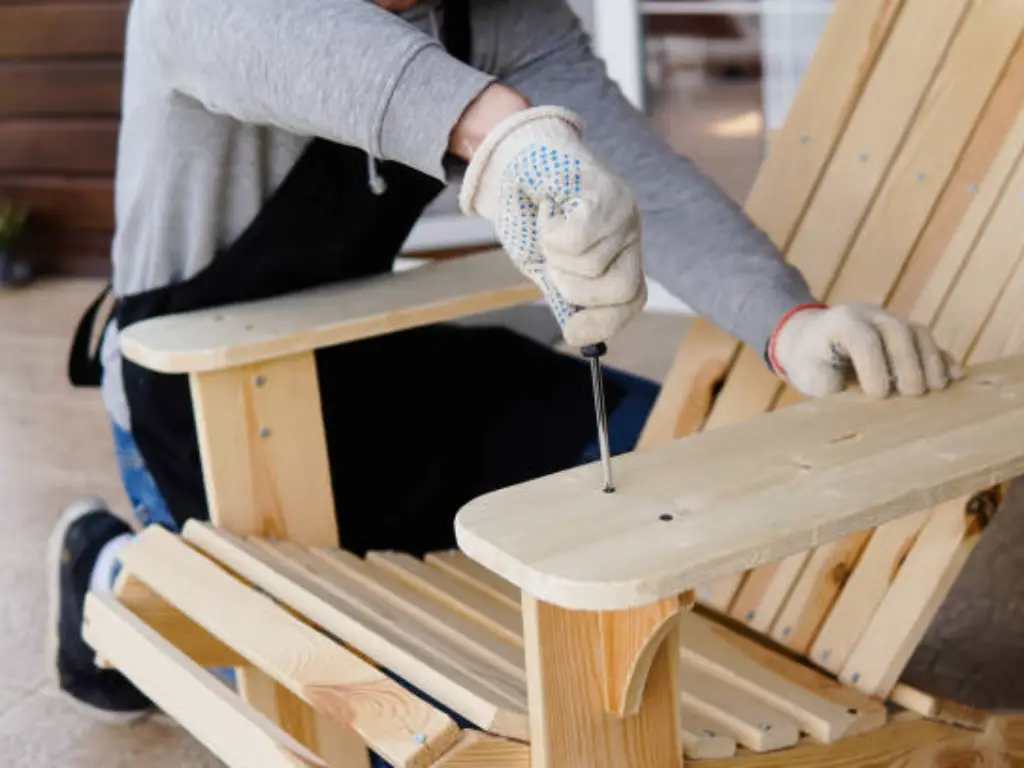Introduction
Have you ever stood in the aisle of a hardware store, pondering the eternal question: Is wood glue stronger than screws? Ah, it’s a conundrum that can stump even seasoned DIYers and beginner woodworkers alike. But fear not! We’re about to embark on a woodworking adventure to unravel this mystery. The strength of a joint in woodworking is not just about holding things together; it’s about the harmony of materials, conditions, and the nature of the project itself. So, let’s dive into the nitty-gritty of wood glue versus screws and discover which champion holds the crown in various scenarios.
Effectiveness of Wood Glue Across Projects
Woodworking truly dives into the minutiae, sometimes even down to the molecular intricacies unseen by the naked eye. Wood glue, when applied with a master’s touch, not only binds two pieces of wood but can forge a connection so formidable that the joined pieces might boast a strength surpassing their original, separate states. Astonishing, isn’t it? The secret behind this Herculean strength lies in the glue’s capability to penetrate deep into the wood fibers, crafting a glue joint that essentially morphs two pieces into a singular, solid piece of wood. In this arena, glue reigns supreme in maximizing surface area; it ensures that every inch of the joint contributes to holding the wood pieces together, as opposed to screw heads which rely on the grip of their threads at designated points.
On the flip side, screws introduce a different dynamic. They’re not just about muscle; their true value lies in precision and reliability. Screws thrive under conditions where immediate holding power is paramount and where elements such as extreme temperatures or moisture come into play. Unlike glue, which might call for a tableau of clamps and a generous waiting period to reach full strength, screws offer the gift of instant joint integrity. Furthermore, their utility shines in the assembly of various types of joints, such as the butt joint or miter joint, offering an additional layer of mechanical strength that might elude glue’s grasp. For high-stress scenarios or when a structure is destined to bear considerable loads, the indomitable strength of wood screws presents a more dependable choice. Moreover, their inherent design allows for the disassembly and adjustment of components, proving invaluable in DIY projects that may require future modifications or repairs.

Situations Where Screws Beat Glue
You might be wondering if wood glue is always the best option. Well, it’s not always so straightforward. Let’s talk about screws. These small fasteners do more than just hold things together tightly. They are great when you need something to stay put right away or when things get really hot or wet. Screws can make things strong immediately, unlike glue, which might need some time and clamps to set. Also, in special joining methods like pocket holes or butt joints, screws can add strength that glue alone may not offer. In places that get a lot of stress or have to hold a lot of weight, the tough nature of screws can be more dependable. Plus, if you ever need to take something apart or make adjustments, screws are very helpful. They make fixing or changing parts of your DIY projects easier.
Environmental Impact on Glue vs. Screws
When discussing the environmental considerations of woodworking, the comparison between wood glue and screws takes an intriguing turn. Wood glue, particularly types like PVA (Polyvinyl Acetate), stands out for its eco-friendliness. Its low impact on the environment is a significant advantage, and the process of using it typically generates little to no waste. In contrast, screws represent a different scenario. Their production, often involving metals, requires substantial energy and may contribute to metal waste. However, screws hold an ace up their sleeve: reusability. This feature allows them to be used repeatedly across various projects. As such, despite their initial environmental cost, the ability to reuse screws can, in a way, balance out their ecological footprint.
Furthermore, the application of screws in woodworking entails additional tools and equipment, like the reliable table saw or the precise router, adding to the overall energy usage. On the glue side, the process might involve simple tools like a paste brush or silicone mats for a mess-free workspace. For beginners venturing into DIY projects, understanding these aspects—ranging from the types of joint like the end grain or miter joint to the environmental impact—is crucial. The choice between glue and screws often boils down to factors beyond mere strength, encompassing the entire lifecycle of the project, including potential waste, additional costs, and environmental sustainability. This comprehensive understanding helps in crafting not just a functional piece but also one that aligns with the maker’s values and the broader concerns of resource conservation and environmental responsibility.

Glued vs. Screwed Joints: Durability
When we talk about which lasts longer, wood glue or screws, it gets really interesting. If you use wood glue the right way, it can make a really strong connection, even stronger than the wood itself! This is especially true when we talk about pulling or stretching strength. So, a part joined with glue is less likely to break apart when pulled or stretched. But it’s a different story with screws. Screws are great for holding things together when there’s a lot of moving around or force from different directions. They are better at handling these forces than glue because they physically hold the wood pieces together, helping them stand up to movement or force that could make a glued joint weaker over time.
Wood Type’s Role in Glue vs. Screws Efficiency
The kind of wood is really important when deciding if glue or screws work better. Softwoods absorb glue well because they’re kind of spongey. This lets the glue get deep into the wood, making a super strong connection. But, when you’re working with hardwoods, you might need a special kind of glue or to prepare the wood differently to get that strong bond. On the other hand, you can use screws with almost any kind of wood. Still, you have to pick the right screw for the job. You need to think about how long and thick the screw is and the type of thread it has. This makes sure it fits the wood’s hardness and texture without splitting it or making it weaker.

Wood Glue Types Surpassing Screws in Strength
You might be surprised to hear this, but some wood glues are actually stronger than screws for certain jobs. Epoxies and polyurethane glues are really strong and can even fill in gaps. They can stick to many different materials, not just wood. These glues stay strong through temperature changes and wet conditions, which makes them perfect for outdoor stuff or places that get a lot of weather exposure. Screws, however, might get weaker over time because they can rust or corrode, especially in damp or salty places.
Boosting Glued Joints with Screws
Why not use both wood glue and screws? Doing this can give you the strongest and most durable connection in woodworking projects. Glue bonds wood pieces together on a very tiny level. Screws provide strong, quick holding power. This combination works really well in places that get a lot of pressure or need to be strong right away. For instance, if you use screws to keep parts together while the glue dries, you won’t need clamps. This makes sure everything fits tightly, making your project more stable and long-lasting.
Cost Analysis: Wood Glue vs. Screws
At first glance, you might think screws are cheaper, especially for small projects or fixes. But if you look closer at the costs, wood glue can be a really affordable option for lots of woodworking projects. A single bottle of wood glue can be used for many projects, which makes it cost less per use. Screws might not cost much on their own, but their price can go up for big projects or over time. This is because you can’t always use them again if they get damaged when you take them out. Plus, you need extra tools like drills and bits to put in screws, which adds to the cost.
More Than A Furniture Hardware Manufacturer
Your Sales Growth Specialist
Preparation Techniques for Optimal Joint Strength
Getting the strongest joint isn’t just about picking between wood glue and screws. It also means preparing and applying them the right way. For glued joints, it’s important to make sure the wood surfaces are clean, smooth, and fit together well. Using the right amount of glue, spreading it evenly, and using clamps to press the pieces together until the glue dries can make the joint much stronger. With screws, drilling small guide holes first helps prevent the wood from splitting. It also makes sure the screws go in at the right depth and angle, which helps them hold better.
Best Uses for Glue and Screws in Furniture
In making furniture, deciding whether to use glue or screws depends on what you’re making and how you want it to look. Glue is great for parts of furniture where you don’t want to see any fasteners, like in fancy cabinets or when putting together big pieces. Screws are better for parts that need to be strong and might need to be taken apart or put together easily, like bed frames or shelves. Knowing what each option is good at and not so good at helps you pick the best one for your project. This way, you can make sure your furniture is both sturdy and nice to look at.

Woodworking Pros on Glue vs. Screws Debate
If you ask a woodworking expert about using glue or screws, you’ll hear many different views. But, most agree that it really depends on what you’re making, what kind of stress the joint will face, and what you prefer. A lot of pros suggest using both, depending on the situation. For example, glue can be great for areas where you care about how it looks and want it to be really strong. Screws might be better for parts that need to be sturdy and might have to be adjusted later. The main point is, knowing how and when to use both glue and screws is key for anyone wanting to make high-quality and lasting pieces.
Comparing Repairability of Glued vs. Screwed Joints
When it comes to fixing things later, how long a woodworking project lasts and how eco-friendly it is really matter. It’s usually easier to fix or take apart things that are put together with screws. That’s why screws are a good choice if you might need to change or fix something later on. Glue can make things very strong, but it might be hard to take apart glued pieces without hurting the wood. Yet, if you know the right way to do it and use certain chemicals, you can break down the glue to fix things. This needs extra care and work, though. When you’re deciding whether to use glue or screws, thinking about how durable you want the project to be and how easy it should be to fix it is important.
| Feature | Wood Glue | Screws |
| Strength | Can be stronger than wood itself; bonds at a molecular level | Provides immediate holding power; excels under dynamic loads |
| Durability | Strong in tensile strength; less likely to break under tension | Resilient under dynamic loads; better for lateral and shear forces |
| Environmental Impact | Low toxicity; minimal waste | Energy-intensive production; reusable, mitigating initial footprint |
| Suitability for Wood Types | Better for porous woods like softwoods; deep penetration | Versatile; suitable for various woods with proper screw selection |
| Resistance to Conditions | Some types (e.g., epoxies, polyurethane) are resistant to temperature and moisture | Can weaken over time due to rust or corrosion |
| Combination Use | Can be combined with screws for enhanced strength and stability | Often used with glue for reinforced joints |
| Cost | Cost-effective over multiple projects; minimal tools required | Initial lower cost, but can increase with scale and tool requirements |
| Preparation | Requires clean, flat surfaces and even application; curing time needed | Requires pre-drilling to prevent wood split; immediate strength |
| Best Use in Furniture | Ideal for seamless joints or large surface areas | Better for structural components, easy assembly/disassembly |
| Repairability | Challenging to separate without damage; possible with right techniques | Easier to repair or disassemble; adjustable for future modifications |
Conclusion
So, you’re wondering if wood glue is stronger than screws? It’s not a simple yes or no answer. It really depends on what you’re working on. Wood glue can make an incredibly strong bond if used under the right conditions. Screws, on the other hand, give great mechanical strength and are easy to take apart if needed. Often, the best choice is to use both. Use glue for a strong, smooth bond and screws for solid support. Knowing when and how to use both wood glue and screws can really make your woodworking projects better and last longer.







